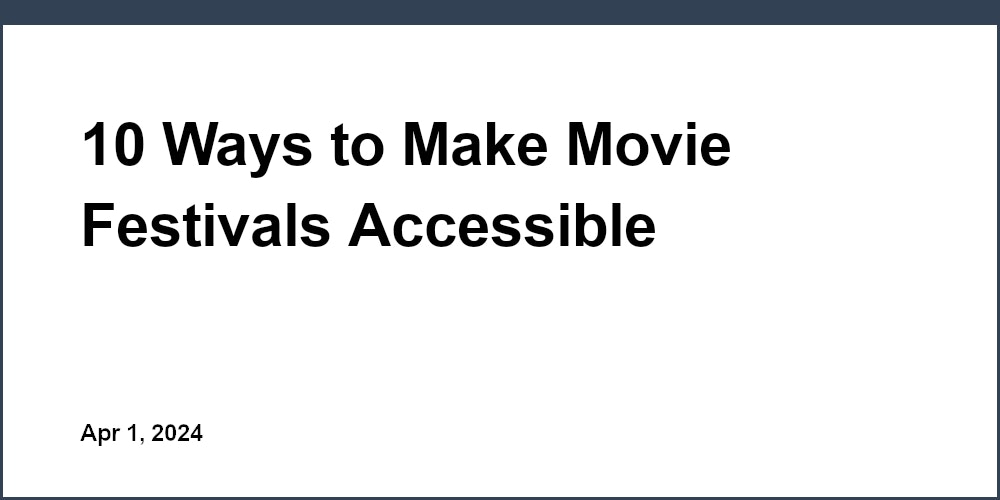Introducing Video on Demand
Video on demand (VOD) refers to technology that allows viewers to instantly access and watch video content like movies and TV shows whenever they want, without needing to tune in at a specific scheduled time. The rise of streaming services like Netflix, Hulu, and Amazon Prime Video has made VOD massively popular in recent years. Key benefits for consumers include getting instant access to huge libraries of content that can be watched anytime, anywhere, paused and resumed, and viewed on an array of devices. While VOD has traditionally focused on home entertainment, it is now expanding into the movie theater industry as well. Theaters can take advantage of on-demand technology to improve flexibility, boost revenue, and deliver better experiences for moviegoers.
Challenges Facing Movie Theaters
Movie theaters face escalating challenges that threaten their long-term viability. Declining ticket sales, inconveniences in the moviegoing process, and difficulty connecting with younger audiences highlight the need for innovation.
Plummeting Ticket Sales
The pandemic dealt a devastating blow to theaters with extended closures and audience shifts to at-home streaming. Global box office revenue dropped over 70% in 2020 compared to the previous year, with US and Canadian ticket sales declining 80% to just $2.2 billion. Entrenched streaming habits on platforms like Netflix, Hulu, and Disney+ present an uphill battle for enticing audiences back to cinemas at pre-pandemic levels. AMC Theatres saw attendance drop nearly 70% in 2020. Theaters must identify ways to enhance value and differentiate from living room viewing.
Inconvenient and Inflexible Moviegoing
Even before the pandemic, in-theater experiences had room for improvement. AMC Theatres received widespread complaints in 2019 for long concession lines routinely taking 30+ minutes. Showtimes are restricted to set schedules, limiting selection and spontaneity. It can be a scramble trying to coordinate groups due to these rigid constraints. Modern consumers expect flexibility and convenience as the norm. Theaters need to innovate to deliver more seamless experiences satisfying changing attitudes.
Disconnect with Millennials and Gen Z
Perhaps the biggest issue facing theaters is a widening disconnect with younger generations. Millennials and Gen Z have been raised in an era of instant, on-demand entertainment catered around individual tastes. Netflix, Hulu, Disney+, and other streaming platforms resonate far more with these demographics. Theaters can seem antiquated in comparison to the personalized digital experiences younger audiences prefer. Winning the loyalty of youth accustomed to convenience should be a top priority.
Capitalizing on Premium Video On Demand
The emergence of premium video on demand (PVOD) is opening new distribution models outside of theaters. Major studios like Disney and Warner Bros. have released films on streaming the same day as cinemas during the pandemic, with PVOD revenue jumping over 350% year-over-year. While windows will likely expand again, PVOD has shown promise in reaching wider audiences. Theaters themselves can also leverage on-demand technology using cinema apps and platforms. Offering VOD would allow theaters to showcase films beyond what's physically screening, with more choice and instant remote access. Blending both in-theater and on-demand experiences would maximize flexibility and convenience.
Key Benefits of Video On Demand for Theaters
Integrating VOD alongside traditional theatrical releases unlocks significant advantages. Additional revenue, improved access, and stronger loyalty potential make a compelling case for theaters to invest in video on demand capabilities.
Driving Incremental Revenue Year-Round
VOD introduces a supplemental income stream from digital rentals and purchases of both new releases and catalog titles. For example, Cinemark generated $80 million in 2021 from Movie Club's VOD options. Concessions and merchandise can be bundled with VOD sales to drive higher transaction values. Offering premium early home access to rent movies still screening could also capture incremental dollars from eager viewers.
Meeting Demand for Access and Convenience
On-demand movies can be watched anytime from home. This supports more flexible viewing aligned with individual schedules. Group movie nights are easier to plan using in-home streaming. Accessibility for parents with young children also improves. Meeting the on-demand preferences of younger demographics expands the potential audience.
Strengthening Loyalty with Unified Experiences
The optimal strategy is to integrate in-theater and VOD options together into one seamless brand ecosystem. Cross-channel promotions and rewards programs help nurture lasting engagement and loyalty. For instance, Cinemark Movie Club bundles discounted tickets with VOD benefits. Moviegoers feel valued through personalized experiences across all viewing touchpoints. Multi-channel engagement strengthens retention and satisfaction.
Case Study: Cinemark Movie Club VOD Uplifts Engagement
A success case highlighting the promise of VOD is Cinemark's new on-demand offering for their subscription Movie Club members. Films can be rented or purchased on the same day they hit theaters. Benefits are bundled on top of existing subscription perks like ticket discounts. Early data shows subscribers increasing engagement through the added flexibility of on-demand, with digital rentals up over 60%. This real-world example demonstrates how VOD can complement traditional theatrical releases while driving loyalty.
Best Practices for Rolling Out VOD
Launching video on demand can reap significant dividends if executed thoughtfully. The keys to success involve curating an enticing catalog, selecting intuitive platforms, and promoting the new services effectively.
Choosing the Right VOD Software
Look for VOD solutions that fully integrate into your cinema's website, apps, and management systems. Support for both TVOD transactions and subscription models is ideal. Robust analytics from providers like Filmgrail give data to optimize promotions. Marketing tools like email and push notifications also help drive usage.
Building a Robust Digital Movie Catalog
Having rights to distribute films on demand is the foundation. Negotiate digital release deals when acquiring new titles. Digitize library holdings while distribution control lasts. Produce exclusive extra content like behind-the-scenes footage. Refresh with new rentals weekly. Curate sections by genre, release window, etc. to spur discovery.
Promoting VOD Services Across All Channels
Promote video on demand services through all customer touchpoints. Send email and SMS campaigns to announce new arrivals. Post trailers and giveaways on social media. Run in-theater trailers before films available to rent or buy digitally. Push app notifications when releases go live. Offer bundled promotions with concessions for launch.
The Future is On Demand
Video on demand presents a major opportunity for movie theaters to expand audience reach and revenue in the digital age. Today's movie fans expect flexible anytime access along with immersive in-theater experiences. Leading cinema chains already generate significant earnings from integrating VOD into their ecosystem. Filmgrail's cinema apps, for example, make rolling out VOD seamless. Theaters must continue innovating their models with omnichannel strategies to stay competitive. By embracing on-demand movies as a complementary offering, theaters can thrive for years to come.


